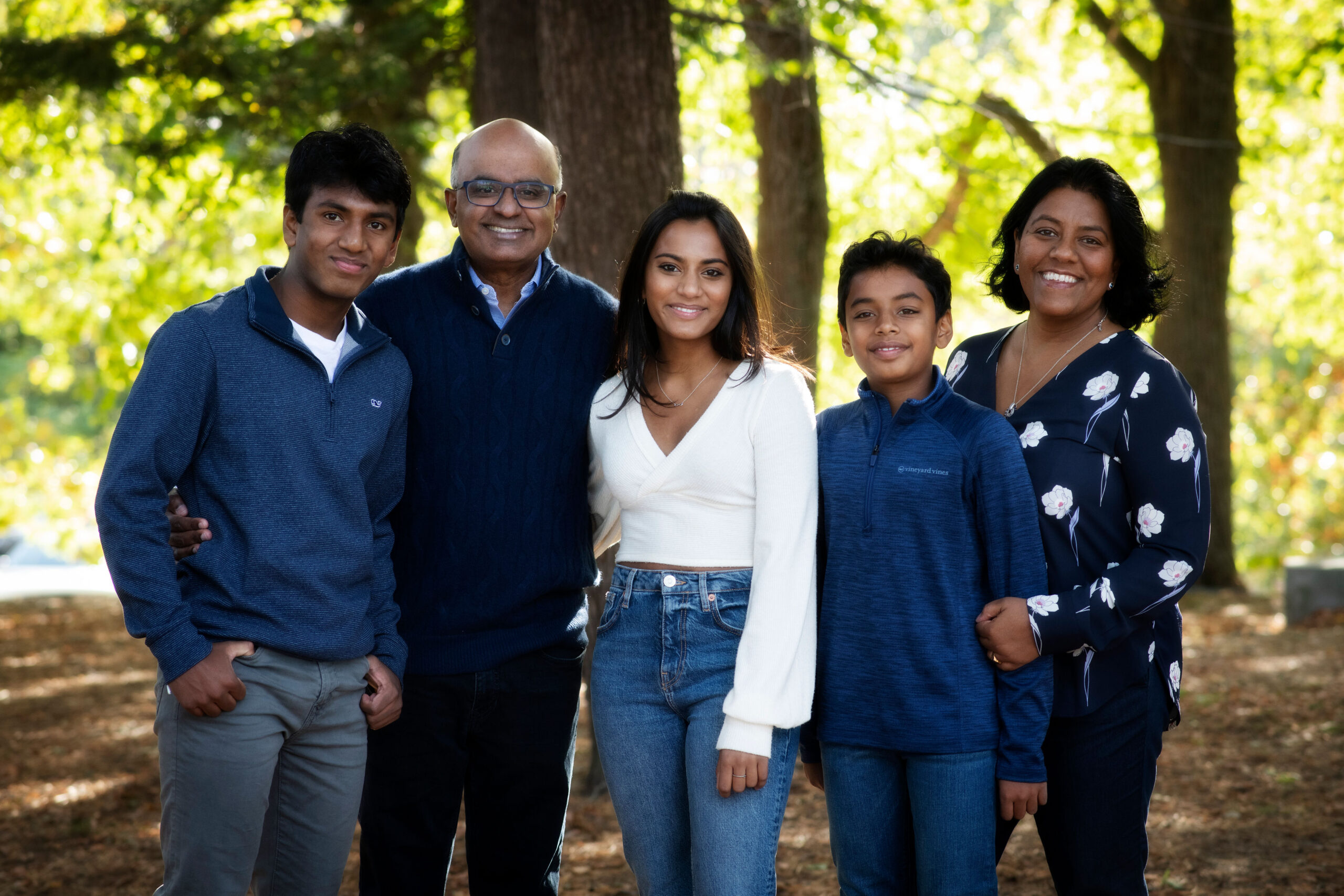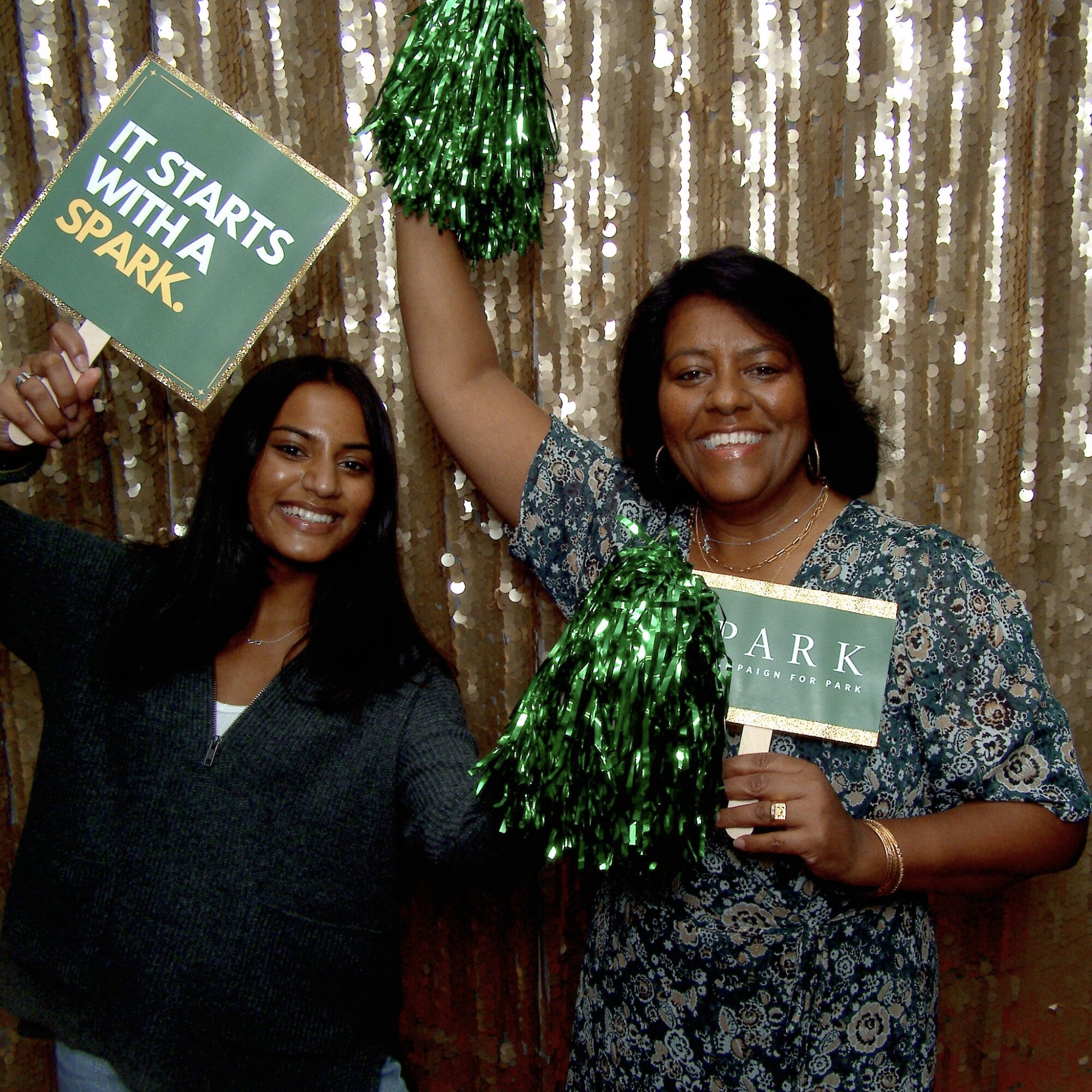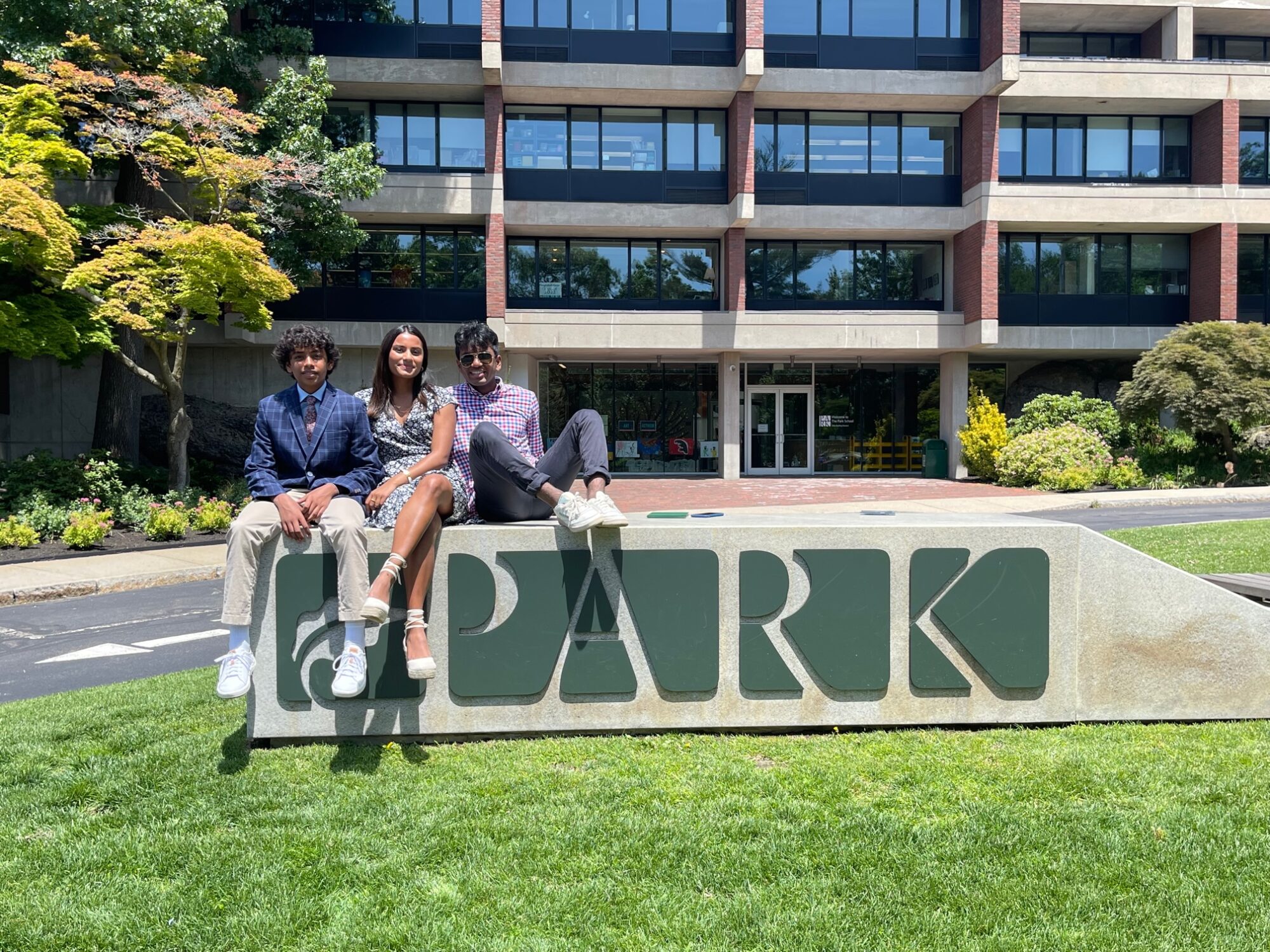
Following 28 child years at Park, Neela Pal and Sek Kathiresan joined Director of Development Shannon O’Leary for a conversation about recognizing Park’s impact, staying connected, and giving back.
Shannon: I love to start conversations by asking people what they love most about Park.
Sek: What I love most about Park is that it has taught our kids to be confident learners who are comfortable in their own skin. That’s the essence of Park. The kids are who they are because of Park.
Neela: I love the community. Both the academic community and the friendships that our children built there have enabled them to find their voices, feel comfortable about who they are, and explore new and different things. I love that Devan, our youngest, had never done theater, and was not sure about taking the risk, but Park gave him the space and the support to try something new. He said to me at the end, “Mom, I never thought I would do that, but it was really fun!” That speaks to the kind of community that Park is, that it nurtures kids to try new things, supports them in those activities, and celebrates them at the end of those moments.
Do you have a favorite space at Park?
N: I always loved Morning Meeting in the Theater. I enjoyed seeing everybody come together in that space. It always made for a real moment of connection between students and adults. I loved the moment of silence before classes started.
S: My favorite space is the space just outside the Theater – the lobby where I would get my coffee! I had a morning ritual for many, many years before COVID. I would drop the kids off, go in and get some coffee, and talk to one or two people. That was always a fun part of the day.

Neela, as a member of the Board of Trustees and Campaign Planning Committee, you have been deeply involved in The SPARK Campaign from the earliest stage. Is there an aspect of the campaign that is most exciting to you?
N: Two things come to mind right away. First, I appreciate that we are approaching the campaign through a lens of inclusivity. SPARK has been open to everybody right from the beginning, and I think it’s really important that gifts of all sizes are celebrated because they all work together to help us achieve our goals. It speaks to our values that this campaign is by and for the community, the whole community. I love that. Everybody is going to benefit from SPARK. And we are seeing those benefits so quickly because of the phased approach. In the way the campaign is structured, we don’t have to wait ten years before we see a project realized. We are seeing incremental improvements that are making an impact in real-time. The School is leveraging our investments to move forward quickly.
Secondly, I appreciate that the campaign is structured to help the School achieve its goals around academic excellence and social-emotional learning. What the School is doing to improve the learning environment and space, while also accelerating the work of strengthening our program, really supports their commitment to the whole child.
Park is a place where your children grow, and you grow as a family. It will be one of the longest relationships we ever have with an institution and that’s special.
Your family made a multi-year commitment to SPARK in 2022. What inspired you to continue giving generously to Park as you make this transition from current parents to parents of alumni?
S: We are incredibly grateful to the institution. The campaign facilitates our ability to show that gratitude.
N: We have seen the full arc of Park. Now that we are alumni parents, our giving to the campaign is a way we can stay connected to Park, and for our kids to continue to see the impact of their Park experience. I believe the impact of Park is felt most significantly once you leave Park. When you’re at Park, you see the year-to-year change. What I see now with Nik as a senior in high-school and Nina as a sophomore in college, is that they are still getting together with their Park friends. They still have this strong community. There is such a sense of connectedness. On the academic side, Nina took a class on Africa and she was telling me about the content she remembered learning in sixth and seventh grade. And Devan, as he was preparing to start ninth grade, told me he felt confident about stepping into high school. He had a sense of his academic proficiency. Sometimes you don’t see that institutional impact until the kids leave. It’s nice to be able to recognize that impact, stay connected, and give back.
S: For our family, we had 28 child years at Park. We spent a lot of time at that place! And a lot of the conversations our children still have today revolve around their memories, their very fond memories, of things happening at Park. They’ll mention May Day, or Yule Fest songs, all these little moments that they shared and we shared as a family that is a real source of comfort and fondness for us. They shared a lot of teachers over the years, as well. Ms. Come, for example, taught all three kids in Spanish and Nina still gets together with her when she comes home from college.
N: Our kids grew up at Park, and so did we. We were a young family when we entered with Nina. We built such strong connections and friendships. Park is a place where your children grow, and you grow as a family. It will be one of the longest relationships we ever have with an institution and that’s special.

S: I think people tend to give to places that they cherish. Even though our kids have graduated, we feel a tremendous sense of gratitude and that’s one of the reasons we have chosen to give in this way. We want this place to be nurtured so that others can come in and benefit in the same way that we did.
N: The elementary years are such foundational years. It’s when students establish the kind of attitudes and habits that you want your children to have as learners over the next four, eight, or 12 years of further education. If you can set a really strong foundation, which I think Park provides, the elementary years will be a launching pad as they go on in their educational journey. Our kids came into their high school years feeling good about who they are, excited to try new things, curious to learn, and with competencies around managing time and homework. We give back so that other children can have that same strong foundation.
With all of the insight gleaned over 28 child years at the School, what is your greatest hope for Park’s future?
N: Park’s real magic is in this intersection of academic excellence and the whole child. Kids come to Park and experience great programs and learning, and Park does it in a way that nurtures connection, that builds trust, and that is inclusive. I think those are critical skills for people to be successful in the world and in life. My greatest hope is that we continue to nurture that commitment to academic excellence and the whole child.
S: Simply put, my greatest hope is that it continues to thrive and educate the next generation of learners. And in order to do that, it needs our support. That’s been our primary motivation to give to SPARK.

